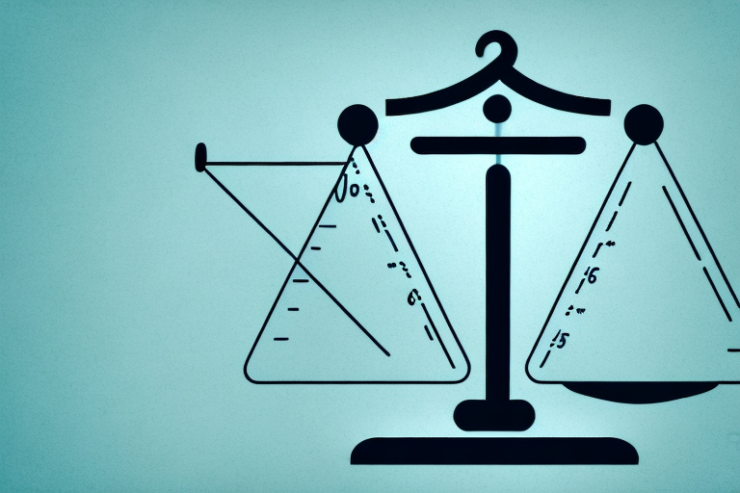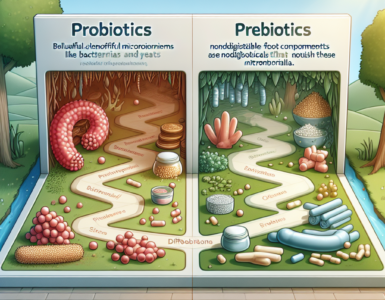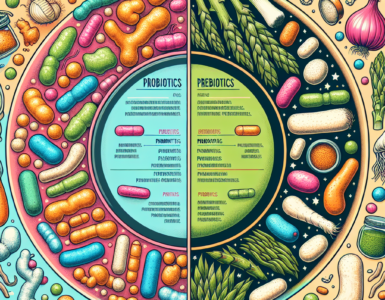Are you tired of trying every diet and workout plan under the sun without seeing any significant results? Losing weight can be a frustrating process, but with the right strategies, it can also be an achievable one. In this article, we’ll explore seven proven strategies for losing weight quickly and effectively. From understanding the science behind weight loss to incorporating high-intensity interval training (HIIT), we’ve got you covered. Let’s get started.
Understanding the Basics of Weight Loss
Before diving into the strategies, it’s important to understand the concept of weight loss. In simple terms, weight loss occurs when you burn more calories than you consume. This can be achieved through a combination of diet and exercise. However, it’s not just about the number of calories – the quality of your food and the type of exercise you do also play a crucial role in weight loss.
The Science Behind Weight Loss
Weight loss is not a one-size-fits-all process. The rate at which you lose weight depends on several factors, such as your age, gender, and current weight. Generally speaking, creating a calorie deficit of 3,500 calories per week can result in a weight loss of one pound per week. However, it’s important to note that this number may vary for each individual.
There are several factors that can affect the rate of weight loss. For example, people who are overweight or obese may lose weight more quickly than those who are at a healthy weight. This is because they have more excess weight to lose. Additionally, people who are more physically active may lose weight more quickly than those who are sedentary, as exercise can increase the number of calories burned.
Setting Realistic Goals
One of the most important aspects of weight loss is setting realistic goals. It’s easy to get caught up in the idea of losing a significant amount of weight in a short period. However, this can often lead to unrealistic expectations and disappointment. Set achievable goals for yourself, such as losing one to two pounds per week. This way, you’re more likely to stick to your plan and see long-term results.
It’s also important to remember that weight loss is not just about the number on the scale. Other factors, such as improvements in body composition and overall health, should also be taken into account when setting goals.
Importance of a Balanced Diet
A balanced diet plays a crucial role in weight loss. Consuming a diet rich in whole foods such as fruits, vegetables, lean protein, and complex carbohydrates can provide your body with the necessary nutrients for weight loss. Additionally, reducing your intake of processed foods and sugary drinks can greatly contribute to weight loss.
It’s important to note that a balanced diet doesn’t necessarily mean cutting out all of your favorite foods. Instead, focus on moderation and portion control. For example, if you love pizza, try making a homemade version with whole wheat crust and plenty of veggies instead of ordering from a fast food chain.
The Role of Exercise
While diet is an important factor in weight loss, exercise also plays a crucial role. Regular exercise can help you burn more calories, increase muscle mass, and improve overall health. Aim for at least 150 minutes of moderate-intensity exercise per week, such as brisk walking, cycling, or swimming.
Strength training is also important for weight loss, as it can help you build muscle. Muscle burns more calories at rest than fat, so increasing your muscle mass can help you burn more calories overall.
The Importance of Sleep
Sleep is often overlooked when it comes to weight loss, but it’s an important factor to consider. Lack of sleep can disrupt hormones that regulate hunger and satiety, leading to overeating and weight gain. Aim for at least seven hours of sleep per night to support your weight loss goals.
Additionally, stress can also affect weight loss. High levels of stress can lead to overeating and poor food choices. Incorporating stress-reducing activities such as meditation or yoga into your routine can help support your weight loss efforts.
Conclusion
Weight loss is a complex process that involves a combination of factors, including diet, exercise, sleep, and stress management. By setting realistic goals, focusing on a balanced diet, incorporating regular exercise, and prioritizing sleep and stress management, you can achieve long-term weight loss success.
Strategy 1: Intermittent Fasting
What is Intermittent Fasting?
Intermittent fasting is a diet strategy that involves periodic fasting and feasting periods. The idea behind intermittent fasting is to limit the amount of time you spend eating and increase the amount of time you spend fasting. This can help you lose weight, improve your health, and even extend your lifespan.
There are several different types of intermittent fasting, each with its own unique approach. Some of the most popular methods include the 16/8 method, the 5:2 method, and the eat-stop-eat method. Each method involves different fasting and eating periods, so it’s important to choose the one that works best for you.
Different Types of Intermittent Fasting
The 16/8 method is one of the most popular types of intermittent fasting. This method involves fasting for 16 hours and eating during an 8-hour window. For example, you might eat your first meal at noon and your last meal at 8pm, then fast until noon the next day. This method is easy to follow and can be done every day.
The 5:2 method involves eating normally for five days and restricting calorie intake on two non-consecutive days. On these two days, you would eat only 500-600 calories. This method can be more challenging, but it can also be more effective for weight loss.
The eat-stop-eat method involves fasting for 24 hours once or twice a week. For example, you might fast from dinner one day until dinner the next day. This method can be difficult, but it can also be very effective for weight loss and improving insulin sensitivity.
Benefits and Precautions
Intermittent fasting has been shown to have several benefits for weight loss, such as reducing insulin resistance and increasing fat burning. It can also improve your overall health by reducing inflammation, improving brain function, and even extending your lifespan.
However, it’s important to note that intermittent fasting may not be suitable for everyone. If you have a history of eating disorders or certain medical conditions, such as diabetes, you should consult with a healthcare professional before starting any new diet plan.
Additionally, it’s important to make sure you’re still getting enough nutrients and calories during your eating periods. It can be easy to overeat or undereat when you’re not following a strict meal plan, so it’s important to listen to your body and eat when you’re hungry.
Overall, intermittent fasting can be a safe and effective way to lose weight and improve your health. Just make sure to choose a method that works for you and consult with a healthcare professional if you have any concerns.
Strategy 2: Incorporating High-Intensity Interval Training (HIIT)
Are you looking for a new workout strategy to help you reach your weight loss goals? Look no further than high-intensity interval training, or HIIT for short. This workout method involves short bursts of high-intensity exercise followed by periods of rest, making it a great option for those with limited time.
What is HIIT?
HIIT can be done with virtually any type of exercise, such as running, cycling, or weightlifting. The key is to choose exercises that target multiple muscle groups and incorporate a variety of movements. This will help keep your workout challenging and prevent boredom.
During a HIIT workout, you’ll alternate between short periods of high-intensity exercise and periods of rest. For example, you might sprint for 30 seconds followed by 30 seconds of walking or jogging. This cycle might be repeated several times, depending on your fitness level and goals.
Designing a HIIT Workout
When designing a HIIT workout, it’s important to start with a warm-up period to prepare your body for the intense exercise to come. This might include some light cardio, such as jogging or jumping jacks, and some dynamic stretching to loosen up your muscles.
Next, choose several exercises that target different muscle groups. For example, you might do squats, push-ups, and lunges. Perform each exercise for a set amount of time, such as 30 seconds, followed by a short rest period, such as 10 seconds. Repeat this cycle several times, or until you’ve completed your desired workout time.
Finally, finish your workout with a cool-down period to help your body recover and prevent injury. This might include some gentle stretching or light cardio, such as walking or slow cycling.
Advantages of HIIT for Weight Loss
HIIT has been shown to be an effective way to burn calories and fat, even after the workout is finished. This is because the intense exercise causes your body to continue burning calories at a higher rate for several hours after your workout. Additionally, HIIT workouts are often shorter in duration than traditional cardio workouts, making them a great option for those with limited time.
However, it’s important to note that HIIT may not be suitable for everyone, especially those with certain medical conditions. Always consult with a healthcare professional before starting a new exercise routine. With the right approach, HIIT can be a challenging and rewarding way to reach your weight loss goals.
Strategy 3: Tracking Your Food Intake
The Importance of Tracking
Tracking your food intake can be a powerful tool in weight loss. By keeping track of what you eat, you can gain a better understanding of your calorie and nutrient intake. This can help you make more informed decisions about what you eat and how much.
Moreover, tracking your food intake can also help you identify patterns in your eating habits. You may notice that you tend to snack more in the afternoon or that you often reach for sugary foods when you’re feeling stressed. By recognizing these patterns, you can take steps to address them and make healthier choices.
Tools for Tracking Your Food Intake
There are several tools available for tracking your food intake, such as mobile apps and online databases. These tools can help you keep track of calorie and nutrient intake, as well as provide insight into your eating habits.
For instance, some mobile apps allow you to scan the barcode of a packaged food item and automatically log its nutritional information. Others offer a database of common foods and their nutritional values, making it easy to log your meals and snacks.
Additionally, some online databases provide a community aspect, allowing you to connect with others who are also tracking their food intake. This can provide motivation and support as you work towards your weight loss goals.
Tips for Accurate Tracking
To ensure accurate tracking, it’s important to measure your food portions and log them accurately. Eyeballing portion sizes can lead to inaccurate calorie and nutrient counts, which can hinder your weight loss progress.
Furthermore, be mindful of any condiments or sauces that may add extra calories or sugar to your meals. For example, ketchup and barbecue sauce can be surprisingly high in sugar, while salad dressings can be high in fat. Consider using low-calorie or homemade alternatives to keep your meals healthy.
Finally, make sure to log all beverages, including water, as they can also contribute to your calorie intake. While water itself has no calories, sugary drinks like soda and juice can be a significant source of empty calories. Opt for water or unsweetened beverages whenever possible.
Conclusion
Losing weight can be a challenging process, but with the right strategy, it can also be a rewarding one. By understanding the basics of weight loss, setting realistic goals, and incorporating proven strategies such as intermittent fasting, HIIT, and food tracking, you can achieve your weight loss goals quickly and effectively. Remember to always consult with a healthcare professional before starting any new diet or exercise plan. Here’s to a happier, healthier you!











